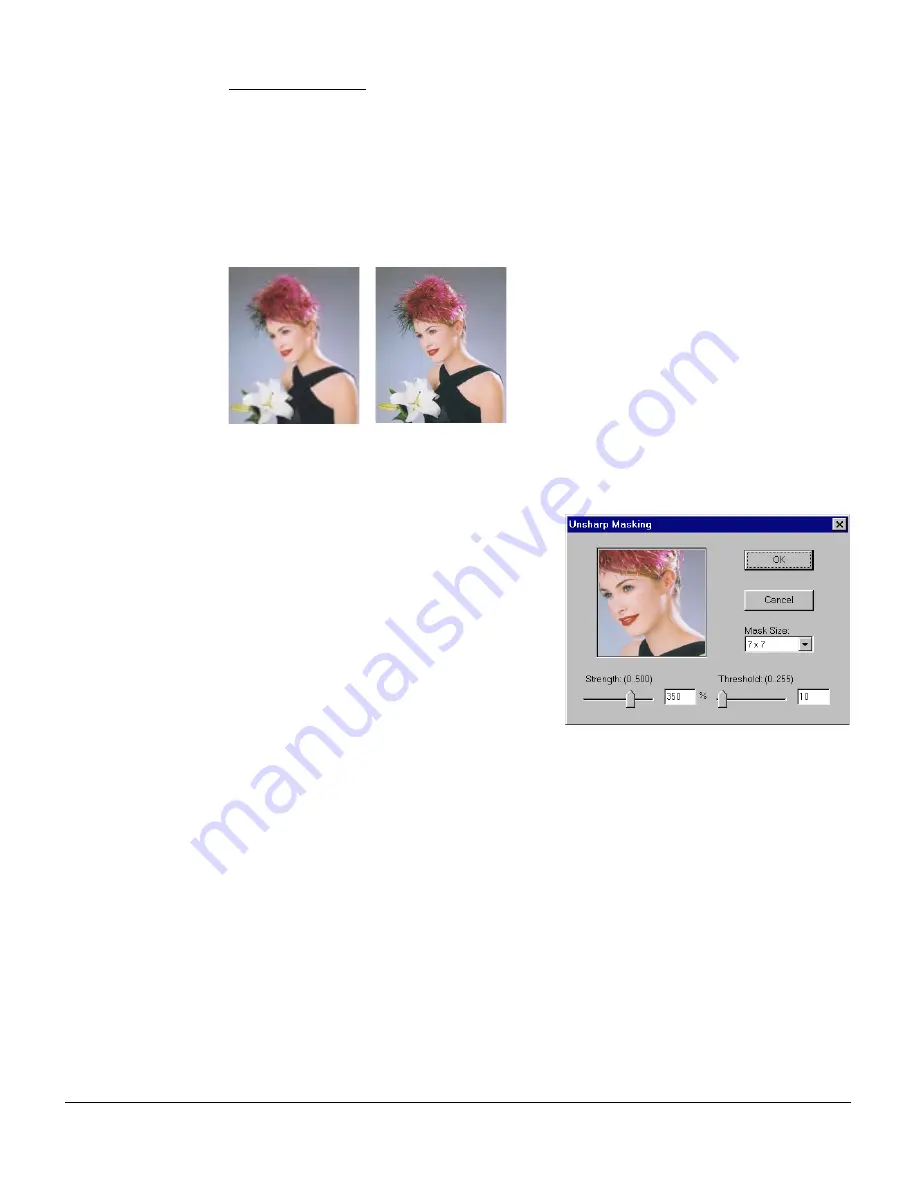
24
Unsharp Masking
The Unsharp Masking filter is used to adjust the contrast of edge detail, creating the
illusion of more image sharpness. This filter can be useful for refocusing an image
that has become blurry from interpolation or scanning, and it is an essential tool for
doing CMYK color separation. In general, Unsharp Masking is needed to render
sharp color reproductions, especially when you wish to make a large color
reproduction from a small original.
Original
Unsharp Masking
To adjust the contrast of edges, follow the steps below:
1. Choose Unsharp Masking to open its
dialog box from the Sharpen options
menu.
2. Enter a value in the Strength box to
specify the degree of the filter’s effect.
The higher the value, the stronger the
effect of the filter.
3. Select a mask size in the Mask Size box.
This parameter determines the depth of
pixels that will be affected at the edge.
Available selections are 3x3, 5x5, 7x7, 9x9, 11x11, and 13x13. For small, low-
resolution image files, 3x3 is sufficient. For high-resolution, or large-scale image
files, use 7x7.
4. Enter a value in the Threshold box. This option allows you to specify a tolerance
range to prevent overall sharpening that might generate noise or cause other
unexpected results. The Threshold defines the required contrast between
adjacent pixels in an image before sharpening is applied to an edge. A lower
value produces a clearer effect.
5. Click OK to apply the settings.
Summary of Contents for ArtixScan DI 2010
Page 1: ......



























